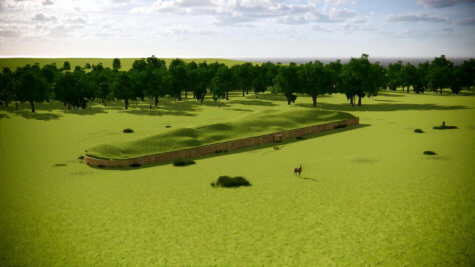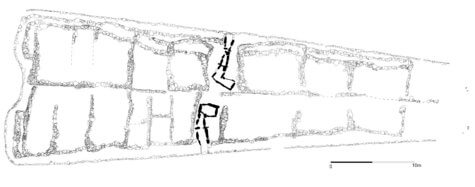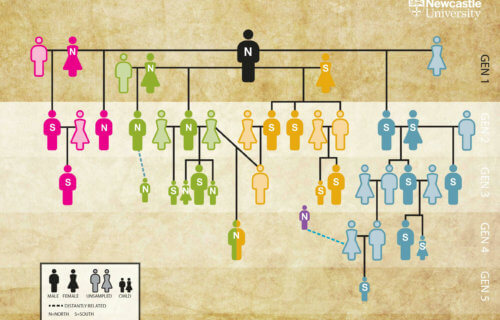NEWCASTLE, United Kingdom — A Stone Age tomb is giving the world a look at the human race’s oldest known “single extended family,” according to a new study. Researchers in the United Kingdom say they found DNA from Stone Age Britons who lived in the nation’s West Country about 5,700 years ago.
Mapping DNA from the bones and teeth of these individuals reveals 27 of the 35 bodies were close biological relatives. This includes five continuous generations that descended from four women, who all had children with the same man.
Study authors note that polygamy and adoption were common in this era. The group lived around 3700 to 3600 BC — a century after scientists believe early humans started farming. Scientists discovered the bodies in a burial monument (a long cairn) on the edge of the Cotswolds-Severn region in the U.K.

“This study gives us an unprecedented insight into kinship in a Neolithic community,” says first author Dr. Chris Fowler of Newcastle University in a media release.
“The tomb at Hazleton North has two separate chambered areas, one accessed via a northern entrance and the other from a southern entrance, and just one extraordinary finding is that initially each of the two halves of the tomb were used to place the remains of the dead from one of two branches of the same family. This is of wider importance because it suggests that the architectural layout of other Neolithic tombs might tell us about how kinship operated at those tombs.”
Fathers sit at the head of the Stone Age table
Researchers add the cairn is the best-preserved Neolithic tomb in the country. Their study is the first to reveal the structure of prehistoric families in detail.
The findings, published in the journal Nature, also provide new insights into the kinship and burial practices of our Stone Age ancestors. The cairn – more than 350 feet long and up to six feet high – had two L-shaped areas north and south of the main “spine.”
Early humans laid their relatives to rest inside these chambers, with men generally lying next to their fathers and brothers. This suggests Stone Age society was “patrilineal,” with later generations lying in the tomb based on their connection to their male forefathers.

The team also discovered two female family members who died during childhood. However, a complete absence of adult daughters suggests their bodies are in the tombs of male partners with whom they had children.
The choice of burial in the north or south chamber appears to be dependent on who the first-generation woman descends from. It indicates these women were “socially significant” in the memories of the community. Early humans may have also welcomed “step-sons” into their family, according to the team.
Surprising layers in the family tree
There were males whose mothers were buried in the tomb, but not their biological fathers. These women also had children with a man descended through the male line.
However, the eight who were not biological relatives of those in the family tree show that being a blood-relative was not a requirement for entry into this tomb. Study authors note three of these were women who may have had a partner in the tomb. They either did not have any children or had daughters who reached adulthood and left the community.

“The excellent DNA preservation at the tomb and the use of the latest technologies in ancient DNA recovery and analysis allowed us to uncover the oldest family tree ever reconstructed and analyze it to understand something profound about the social structure of these ancient groups,” says co-first author Iñigo Olalde of the University of the Basque Country in Spain.
The study hints at a “polygamous society” where adoption was common and paternal and maternal lines of descent were important.
“This study reflects what I think is the future of ancient DNA: one in which archaeologists are able to apply ancient DNA analysis at sufficiently high resolution to address the questions that truly matter to archaeologists,” adds co-author Prof. David Reich of Harvard University.
Farming changed human lifestyles forever
Scientists believe the Neolithic period was a time of human advancement where farming took hold and sedentary civilization became feasible. Farming culture made its way to Britain thanks to migrants from Europe around 4,000 BC — enabling the abandonment of hunter-gatherer lifestyles.
They brought with them agricultural techniques and the previously untamed landscape quickly became more ordered. This period ended around 2500 BC, leading into the Bronze Age.
“It was difficult to imagine just a few years ago that we would ever know about Neolithic kinship structures. But this is just the beginning and no doubt there is a lot more to be discovered from other sites in Britain, Atlantic France, and other regions,” concludes co-author Prof. Ron Pinhasi of Vienna University.
South West News Service writer Mark Waghorn contributed to this report.
